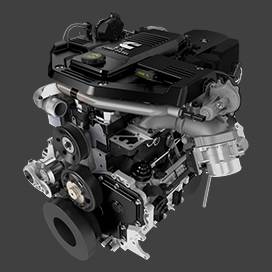ኅዳር . 18, 2024 20:01 Back to list
Optimal Temperature Range for Brake Drums During Operation and Performance Insights
How Hot Should Brake Drums Get?
Brake drums play a vital role in the braking system of vehicles, especially those with drum brakes, which are prevalent in many cars and trucks. Understanding the temperature at which brake drums operate is essential for ensuring safety, performance, and longevity of the braking system. But how hot should brake drums actually get during normal operation?
Brake drums work on the principle of friction. When the driver presses the brake pedal, brake shoes press against the inner surface of the drum, generating friction that slows down the vehicle. This process inherently produces heat, but it’s important to know that excessive heat can lead to brake fade, reduced performance, and an increased risk of brake failure.
Typically, under normal operating conditions, brake drums can reach temperatures between 300°F (about 150°C) and 500°F (around 260°C). However, during aggressive driving, prolonged braking, or towing, temperatures can surge significantly higher. In extreme cases, brake drum temperatures can exceed 1,000°F (approx. 538°C), which is exceedingly high and can lead to serious issues.
Factors Influencing Brake Drum Temperature
Several factors influence how hot brake drums get. These include
1. Driving Conditions Heavy city traffic, frequent stops, or mountainous terrain can lead to higher temperatures due to increased braking demands.
2. Vehicle Load Heavier loads require more braking force, resulting in greater heat generation. Trucks or vehicles used for towing are particularly susceptible to higher brake temperatures.
3. Driving Habits Aggressive driving, including hard braking and frequent acceleration, can elevate brake drum temperatures significantly.
4. Brake System Design Different designs can handle heat differently. Some vehicles are equipped with vented brake drums that facilitate better heat dissipation.
Consequences of Excessive Heat
Excessive heat can cause several issues for brake drums, including
how hot should brake drums get

- Brake Fade This occurs when the braking system overheats, leading to a temporary loss of braking effectiveness
. The driver may notice the pedal feels softer or that the vehicle takes longer to stop.- Warping High temperatures can cause brake drums to warp, leading to uneven wear and reduced braking performance.
- Cracks Extreme heat can lead to the formation of cracks in the drum material, compromising its integrity and safety.
Managing Brake Drum Temperature
To ensure safe braking performance, drivers should adopt good habits and maintenance practices
1. Regular Inspections Have the brake system inspected regularly to catch any potential issues early.
2. Avoid Overloading Ensure the vehicle is not overloaded as this can lead to excessive brake heat.
3. Smooth Driving Practice smooth acceleration and braking, particularly on long downhill descents.
4. Cooling Periods After prolonged driving or heavy braking, allow the brakes to cool down before parking, which can help prevent heat-related damage.
Conclusion
Understanding the appropriate temperature range for brake drums is crucial for any driver. By being aware of the factors influencing brake drum temperature and recognizing the signs of overheating, one can maintain effective braking performance and enhance overall vehicle safety. Regular maintenance and responsible driving habits will go a long way in ensuring that brake drums operate safely and efficiently.
-
Seamless International Solutions for Global Business & Travel
NewsAug.08,2025
-
Premium Volvo Brake Drums: Truck, Semi & VNL Performance Parts
NewsAug.07,2025
-
BPW Axles & Suspensions | Quality Running Gear for Trailers
NewsAug.06,2025
-
Premium Iveco Brake Drum - Durable & Reliable Performance
NewsAug.05,2025
-
High-Performance Nissan Brake Drum | Durable Braking
NewsAug.03,2025
-
2014 Mitsubishi Mirage Rear Brake Drums | Durable & Precise
NewsJul.31,2025
